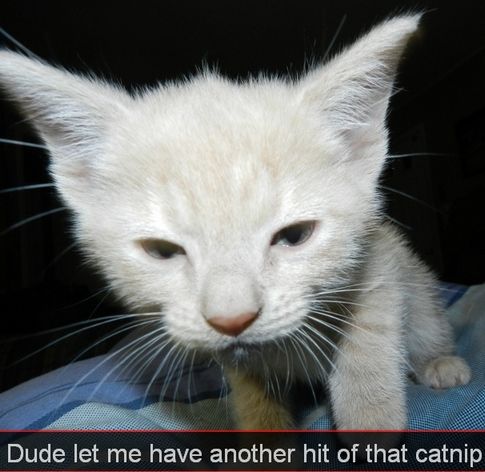
When a cat encounters catnip, it usually sniffs it, rubs against it, licks it & finally eats it. It's actually the sniffing that gets produces the high, it's believed that cats eat catnip to bruise the catnip & therefore release more of the nepetalactone. The high produced will usually last between five & ten minutes.
When sniffed, catnip will stimulate a cat, however when eaten it will act as a sedative.
Around 50% of cats are affected by catnip, and those who are, are affected to differing degrees. Kittens younger than 8 weeks old aren't able to enjoy it's effects. In fact, they show an aversion to it. The response to catnip appears to be inherited as an autosomal gene. It's not just domesticated cats who enjoy the effects of catnip, many lot of wild species also enjoy it. Cats can smell 1 part in a billion in the air. Males & females, entire or desexed, there appears to be no one group who is more readily affected by catnip than another.
Nepetalactone causes a hallucinogenic effect. Some say the effects are similar to LSD, others say similar to marijuana. Because cats roll on the floor, which mimics a female in estrus, it has been suggested that catnip acts as an aphrodisiac, but this is unlikely as males react in just the same way. What is likely is the cat is reacting to similar "feel good" pheromones released during sexual courtship/activity. However, non sexual behaviour including playing, chasing & hunting can also be observed. The response to catnip is via the olfactory system. Even cats who can't smell will can still respond to catnip.
The effects of catnip seem to change from cat to cat. I have one cat who drools & rolls on the floor, I have another one who becomes very hyperactive, a third becomes aggressive, and picks fights with the other cats when he's had catnip.
http://www.cat-world.com.au/all-about-catnip